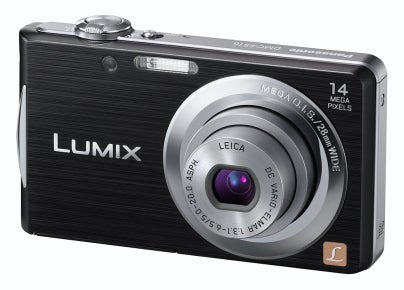Panasonic Lumix DMC-FS16 Review
Panasonic Lumix DMC-FS16 Review
A budget-concious compact, the Panasonic Lumix DMC-FS16 has a number of impressive features. The Panasonic Lumix DMC-FS16 review follows....

Verdict
Pros
- Inexpensive, decent feature set, reasonable image quality
Cons
- Lacking tonal range, uninspired design, poor build
Key Specifications
- Review Price: £179
The Panasonic DMC-FS16 is a budget-conscious compact with a number of specs which wouldn’t look out of place on a model £100 more expensive. From the 14MP sensor to the 720 HD movie mode there’s little to differentiate the FS16 from a number of supposedly higher-end cameras.
Panasonic Lumix DMC-FS16 Review – Features
The features on offer should entice those without a huge amount of cash to spend, mainly because each is geared towards taking a decent shot with as little fuss as possible. Sporting a 4x optically-stabilized zoom lens, coming from a 28mm wide angle. The MEGA portion of the optical stabilization supposedly allows the system to operate in low light, and when focusing closely to the lens. As with the majority of Panasonic cameras an Intelligent Auto mode is present, which reacts to available light and subject to adjust the camera to a specific scene mode.
A 720p HD movie mode is a touch underwhelming when compared to the 1080 Full HD options on show from a number of other models, but the end quality is decent enough to show on a large TV screen. Similarly the 2.7inch LCD screen isn’t anything spectacular, but does the job of previewing and reviewing the images in a perfectly acceptable manner. Having a 4x zoom makes the FS16 less versatile than a number of its peers, but also limits any potential issues with hand shake and low light performance.
Panasonic Lumix DMC-FS16 Review – Design
In terms of design very little has changed between this raft of Lumix compacts and those 12 months ago, with very little in the way of design flair apparent on the black and silver shell. Although cameras in the same price bracket as the DMC-FS16 may offer a similar level of design, a little extra innovation would make all the difference to both this model and those above it. The top of the camera houses little more than the power button, shutter release and zoom control, with the remainder being confined to the rear.
The controls that are contained at the back panel are a touch small, with the Mode button being particularly recessed into the shell. For some reason the Display button is far more prominent, as is the Delete button and D-pad. All are slightly too small for the casing, meaning each moves around when marginally provoked. Annoyingly the playback and record modes are moved between using a small switch, making it a far longer process to change between the two than a non-physical method. Fortunately few of the buttons need to be used frequently, with the camera performing perfectly adequately in automatic mode.
Panasonic Lumix DMC-FS16 Review – Performance
The variety of focus modes on offer speed up the FS16’s ability to locate a subject in impressive fashion, with single-area, 11-section, face detection and AF tracking all available. The 11-section mode is especially useful, and rapid, giving beginners the best possible chance of returning a sharp image. Annoyingly the camera isn’t particularly consistent in returning sharp images, which is particularly frustrating due to the Optical Image Stabilization claims.
Panasonic Lumix DMC-FS16 Review – Image Quality
Image quality is decent enough, although there are a couple of issues that arise to take the sheen off somewhat. The tones tend to be quite bland, missing a degree of saturation to make the images more eye-catching. What’s left is relatively accurate, and keeps a firm grip on the mid-tones. Dynamic range is quite varied, and the camera’s metering copes well in a number of testing circumstances, giving a surprising amount of detail in the highlights and shadow throughout.
This isn’t to say that the low light performance of the FS16 is anything spectacular, as beyond the ISO 400 mark noise starts to creep in and tonal range decline, to the point where ISO 1600 is without any eye-catching tones and almost unrecognizable from images lower in the ISO range.
Verdict
An affordable, well performing camera, but not without a few faults.
Trusted Score
Score in detail
-
Value 9
-
Design 9
-
Features 8
-
Image Quality 8
-
Performance 9

